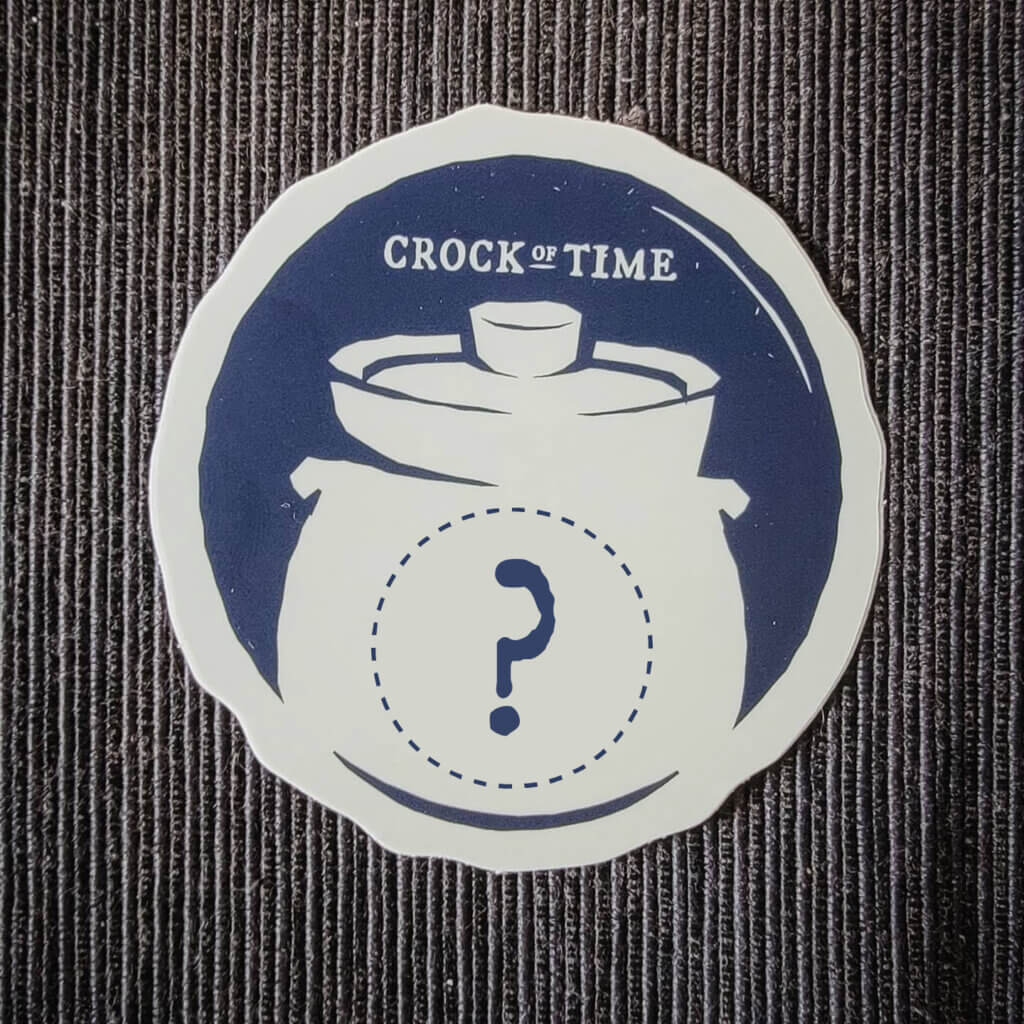Fermentation 2021: Day 1
If you follow me on Twitter or have been in the Discord you might be aware that I decided to purchase a ticket to the Fermentation 2021 conference put on by The Fermentation Association, after learning that it would be switching to a virtual-only event. The first day has come to a close, and I’m excited to share some tidbits before I’m overwhelmed by two more days of information.
Definition & History of Fermentation
The opening session with Dr. Bob Hutkins laid some groundwork about the history of fermentation stretching back thousands of years, but also about the recent trend of fermentation in the zeitgeist. He argued that the recent academic interest in fermentation is a result of its popularization by consumers and folks like Sandor Katz. This might actually get a little complicated for us home fermentors because, for instance, the Lactobacillus genus was reclassified* just last year (due to the discovery of huge variations after genomic sequencing over 200 strains in 2018, now over 2500) with 23 new genera proposed!
That’s not the only thing changing in fermentation academia. Formal definitions for probiotics, prebiotics, and synbiotics have been put together within just the last decade, but fermentation as it relates specifically to food now has a formal definition as of March 2021. This new definition is separate from the biochemical definition which is strictly about “extraction of energy from carbohydrates in the absence of oxygen”.
Fermented foods are made through desired microbial growth and enzymatic conversions of food components.
Science
This means we don’t have to hesitate to call something like amazake fermented, even though the process for making it relies on external enzymes secreted by koji instead of direct microbial action.
Something else interesting that I learned in this session is that probiotics are generally added after the fact in products that tout them, as fermentation cultures are selected for their performance traits, not their health benefits. This is just the first of several shots today aimed at the crowd that is only interested in fermentation as a cure-all. I’ve said before that I’m not here to promote fermentation because of “gut health” or any other claim of health benefits, and we don’t generally have the ability to separate our bacteria like that at home anyways.
The fact is, most studies about fermented foods and health make associations but provide no direct evidence. There are few random controlled trials testing fermented foods except for yogurt, and only those foods that have demonstrated health benefits can be labelled “probiotic”. This doesn’t mean yogurt is the only probiotic food, it just means that we should be careful suggesting that “all fermented foods are healthy”.*
Qimin Yaoshu: Lessons for Today from 5th Century China
I will be focusing my writeups on the sessions I believe are most beneficial to home fermentors, and this session was certainly one of them. This session from Mara King was focused on the Qimin Yaoshu, a 1,500 year old Chinese text whose title means Essential Techniques for the Welfare of the People. It is the first book with recipes in it, but it’s not just about food. Actually, it’s mostly about agriculture, land management, and all sorts of other things about running a large household.
Act according to the seasons and the land. You will achieve more with less effort.
Jia Sixie 賈思勰
This is a book that is very difficult to approach, even for someone who speaks the language, just as it would be difficult for me to read a book written in ye olde English. Regardless, I’d like to get my hands on a translation at some point, at least of the food-related parts. However, Mara did read one fragment that really does clarify that these are generally not recipes in the sense that we think of them, at least as instructions for a person to follow to make a thing. Rather, these were instructions meant for a community to follow—which when you think about it really starts to sound like “tradition”, doesn’t it? This excerpt involved instructions for a young boy dressed in dark clothes to draw some water while facing west on a very particular day of the year, and for other folks to mix this water with the ground wheat, also only facing west.
There are also recipes for douchi and jiangs. Douchi is fermented whole soy beans, and jiang is basically any fermented sauce. There is no recipe for shoyu (AKA soy sauce) because it wasn’t a thing produced until meat-based jiangs fell out of favor, likely in part because of acricultural changes as well as the spread of Buddhism. There are lots of other recipes but the book as a whole speaks to food systems and sustainability, and the idea of working with natural forces rather than against them. What sounds like a very strict and dogmatic command to start a process only “before sunrise on the first day of the seventh moon” was a practical way of scheduling a large fermentation effort to coincide with seasonal changes likely necessary for the success of that ferment.
Mycotopia
This session by Doug Bierend was just delightful. Though he is generally more fungi-focused, his main point is just as applicable to the fermentation community. His hypothesis is that the earnest study and appreciation of fungi seems to encourage certain values that he saw over and over again in geographically dispersed communities. These values include a prioritization of sharing knowledge and labor, a “fungal fellowship” as he put it.
While not “a fermentation expert”, he did experience Sandor Katz in his natural habitat of rural Tennessee. I’m trying desperately not to be overwhelmed by jealousy every time someone talks about how they’ve learned directly from Sandor himself, but I have often heard the same in regards to my proximity to the koji legend Jeremy Umansky and his restaurant Larder in Cleveland. Anyways, I noticed plenty of parallels with what Doug was saying and the sorts of things Sandor writes and talks about constantly in regards to our relationship with our own food.
Doug argues that the fermentation and fungi communities both seem to show that there is another relationship possible with food, microorganisms, nature, and one another. One that is focused on building communities like a mycelial web, sharing knowledge freely and finding a reverence in the practice itself.
Fermentation Journeys: Past, Present, and Future
Topping off the night, the inimitable Sandor Katz set aside his new book to focus on the history of fermentation and his personal journey with it. He began by tying in the biochemical definition of fermentation, poetically describing life on Earth as having begun as fermentation, since fermentation is anerobic and oxygen was not yet present. He also pointed out that in no way did humans invent fermentation, as it is a naturally occurring phenomena, the results of which many other species are attracted to.
After 30 years of looking, he hasn’t been able to find a culture without a tradition of fermentation. He speculates that is due to the fact that all of our food is naturally populated by microorganisms and so it is in some ways inevitable, though not always delicious. But when humans observe the conditions of a successful ferment and learn from them, it became a practical tool for making effective use of our food resources.
Sandor grew up in the 60s and 70s in New York City, and while he wasn’t around fermentation as a practice much it was just simply part of his diet—especially pickles, sauerkraut, and yogurt. It wasn’t until he moved to Tennessee in 1993 and started his first garden that he tried his hand at fermentation. In fact, he credits a recipe in The Joy of Cooking for his first foray into making sauerkraut himself.
For many years, sauerkraut was just a personal obsession—enough to earn the nickname “Sandor Kraut” from his friends. And then one day, he was invited to teach a sauerkraut workshop, and the rest is histo—just kidding. This was a key milestone when, confronted with his students’ latent fears about “germs”, he realized he needed to do some studying about the safety of fermentation. He and his students, like many of us still today, were raised to consider bacteria as dirty and causes of disease and rot. But what he found instead is that the process of fermentation of sauerkraut and other vegetable ferments produces acidity that renders contaminating bacteria harmless.
After writing Wild Fermentation and doing the book tour he met so many different people with different reasons to be interested in fermentation. Some had memories of grandparents making food that they wanted to recreate, some wanted to use it to preserve, others were interested in the health benefits, and others were just lovers of food. But one underlying commonality he saw was that the industrialization of food made many traditional fermentation practices seem mysterious and secretive. He decided to call himself a “fermentation revivalist” with the goal of demystifying fermentation.
Today, fermentation is still appearing on lists of food trends. The thing is, even white middle class folks like myself have been eating and drinking the products of fermentation without hesitation all our lives, including bread, cheese, alcohol, coffee, chocolate, etc.
The future of fermentation? Well, COVID is still happening. Climate change is a reality. Global trade disruptions are more and more common. How can fermentation mitigate or reverse these challenges? With a focus on local, sustainable food production and preservation. Less dependence on exotic foods, more focus on what we have and how we can apply centuries-old techniques in new and unique ways.
That’s it for my notes from day one of the Fermentation 2021 conference. These were not all of the sessions, just the ones I figured were most relevant to what I (and you) are doing here. The science-focused sessions were interesting but ultimately not particularly applicable to the kinds of ferments I’m doing at home in my basement
It is quite late but I’m publishing this with the date set to November 7 so that the dates make sense. Hopefully I’ll be able to keep this up for the next two days on top of my normal work! And I hope you have found this summary useful in some way, friend.

